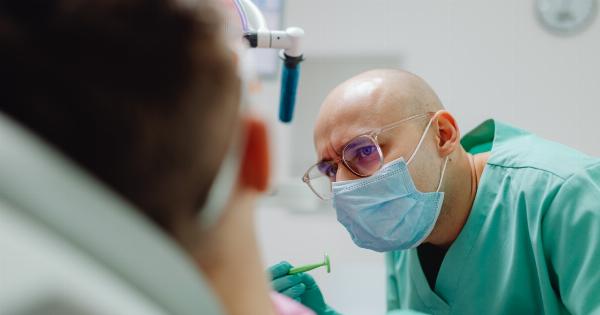Endometriosis is a chronic disease that affects millions of women worldwide. It occurs when tissue similar to the lining of the uterus – called the endometrium – grows outside the uterus, leading to pain and sometimes infertility.
The exact cause of endometriosis is still unknown, and there is currently no cure for the condition. However, there have been significant breakthroughs in the treatment of endometriosis that can greatly help manage symptoms and improve the quality of life for women living with this condition.
Understanding Endometriosis
Before delving into the breakthrough treatment options available, let’s first understand the basics of endometriosis. The endometrium is the tissue that lines the inside of the uterus and prepares it for pregnancy each month.
In women with endometriosis, this tissue is found outside the uterus, usually in the pelvic area. It can attach to various organs, such as the ovaries, fallopian tubes, and even the intestines, causing inflammation and pain.
The most common symptom of endometriosis is pelvic pain, which can range from mild discomfort to debilitating pain that interferes with daily life.
Other symptoms may include heavy or irregular menstrual periods, pain during intercourse, and infertility. These symptoms can vary widely from person to person, making the diagnosis and management of endometriosis a complicated process.
Conventional Treatment Options
Traditionally, the treatment of endometriosis has focused on managing pain and reducing the growth of abnormal tissue. Nonsteroidal anti-inflammatory drugs (NSAIDs) are commonly used to alleviate pain and inflammation.
Hormonal therapies, such as birth control pills, progestin-only medications, and gonadotropin-releasing hormone agonists, can also be prescribed to regulate hormone levels and slow the growth of endometrial tissue.
Surgical options are typically considered for severe cases or when fertility is a concern. Laparoscopy, a minimally invasive surgical procedure, is commonly performed to remove endometrial implants and scar tissue.
In more advanced cases, a hysterectomy may be recommended, which involves the removal of the uterus and sometimes the ovaries.
The Era of Breakthrough Treatments
While conventional treatments have been effective for many women, they often come with side effects and limitations. In recent years, there have been significant advancements in the understanding and treatment of endometriosis.
These breakthrough treatments aim to provide more targeted approaches and improved outcomes for women with endometriosis.
Hormone-Based Innovations
One of the recent breakthroughs in endometriosis treatment involves novel hormone-based therapies. For instance, selective progesterone receptor modulators (SPRMs) have shown promising results in managing pain associated with endometriosis.
These medications specifically target the progesterone receptors in endometrial tissue, reducing inflammation and pain without affecting overall hormone levels.
Another hormone-based innovation is aromatase inhibitors. Endometriosis is known to be estrogen-dependent, and aromatase inhibitors help lower estrogen levels.
By blocking the enzyme aromatase, these medications can limit the growth of abnormal tissue and alleviate symptoms. Aromatase inhibitors are primarily used in postmenopausal women or in combination with estrogen-lowering therapies in premenopausal women.
Immunotherapy for Endometriosis
Immunotherapy is an emerging field in the treatment of various diseases, and it also holds potential for endometriosis. The immune system plays a crucial role in the development and progression of endometriosis.
Researchers are studying immunotherapies that aim to modulate the immune response to endometrial tissue, reducing inflammation and preventing the abnormal growth of tissue outside the uterus.
One such immunotherapy approach is the use of immune checkpoint inhibitors, which have been successful in treating certain types of cancer. These inhibitors can potentially suppress the inflammatory response and halt endometriosis progression.
Although still in the experimental stages, early studies have shown promising results.
Targeted Therapies for Endometriosis
Targeted therapies are treatments that focus on specific molecular targets involved in the development and growth of endometriosis.
These innovative treatments aim to interrupt the mechanisms that promote the survival and proliferation of endometrial tissue outside the uterus.
Angiogenesis inhibitors are a type of targeted therapy being explored for endometriosis. These medications inhibit the formation of new blood vessels that nourish endometrial implants.
By cutting off the blood supply, angiogenesis inhibitors can reduce the growth of abnormal tissue and alleviate symptoms.
Another targeted therapy approach involves blocking specific signaling pathways involved in endometriosis. Researchers are testing various drugs that can interfere with these pathways, preventing the survival and growth of endometrial tissue.
While still in the early stages of development, these targeted therapies show promising potential for the future treatment of endometriosis.
Fertility Preservation Options
For women with endometriosis who desire to have children, fertility preservation is a crucial consideration. Many conventional treatments, such as hysterectomy, can jeopardize fertility.
However, recent breakthroughs have provided new options for preserving fertility in women with endometriosis.
Ovarian tissue cryopreservation is an innovative technique that involves removing and freezing a piece of the ovary containing viable eggs. This preserved tissue can be later thawed and reimplanted or used for in vitro fertilization (IVF).
This method has shown promise in preserving fertility in women with endometriosis who undergo surgical interventions that may affect their ovarian function.
An alternative option is in vitro maturation (IVM) of eggs. Eggs are retrieved from the ovaries while still immature and then matured in the laboratory before being fertilized and implanted.
IVM offers a less invasive and more flexible approach to fertility preservation for women with endometriosis, minimizing the impact on their reproductive organs.
Combined Approaches for Optimal Results
While each breakthrough treatment option has its advantages, it is important to note that combining therapies can often yield better results.
The combination of hormonal therapies, targeted therapies, and pain management techniques can provide comprehensive relief for women with endometriosis.
Furthermore, a multidisciplinary approach that involves a team of healthcare professionals specializing in women’s health, including gynecologists, endocrinologists, and pain management specialists, is crucial for effective and individualized treatment plans. This approach ensures that each woman receives the most suitable combination of treatments tailored to her specific symptoms, goals, and overall health.
Conclusion
The breakthrough treatments available for endometriosis are transforming the approach to managing this chronic condition.
From hormone-based therapies to immunotherapy and targeted therapies, there is increasing hope for better symptom relief and improved quality of life for women with endometriosis.
It is important for women with endometriosis to stay informed about the latest advancements in treatment options and to explore all available choices with their healthcare providers.
With the continuous progress in medical research and innovation, there is optimism that the future holds even more effective and personalized solutions for the management of endometriosis.































